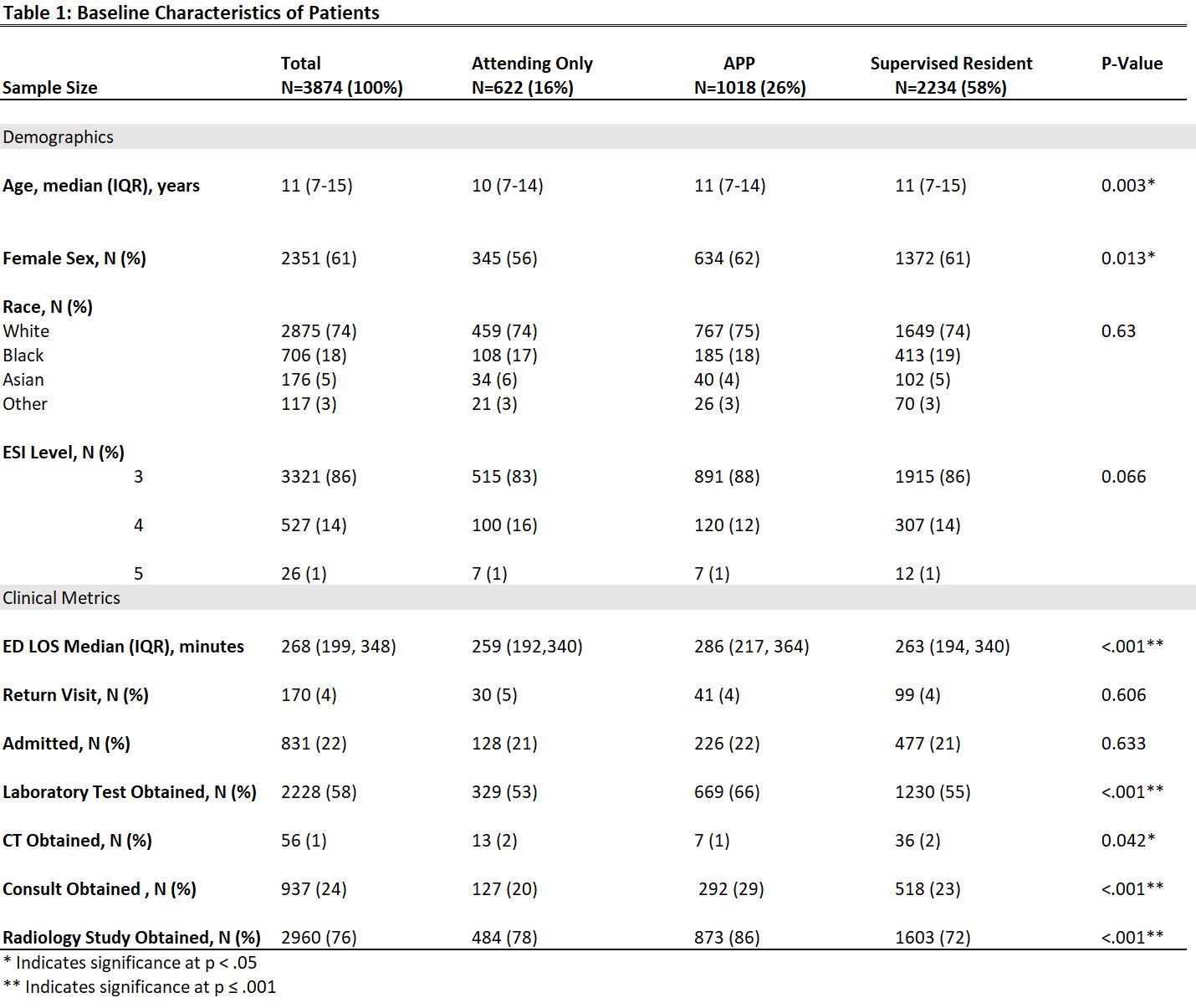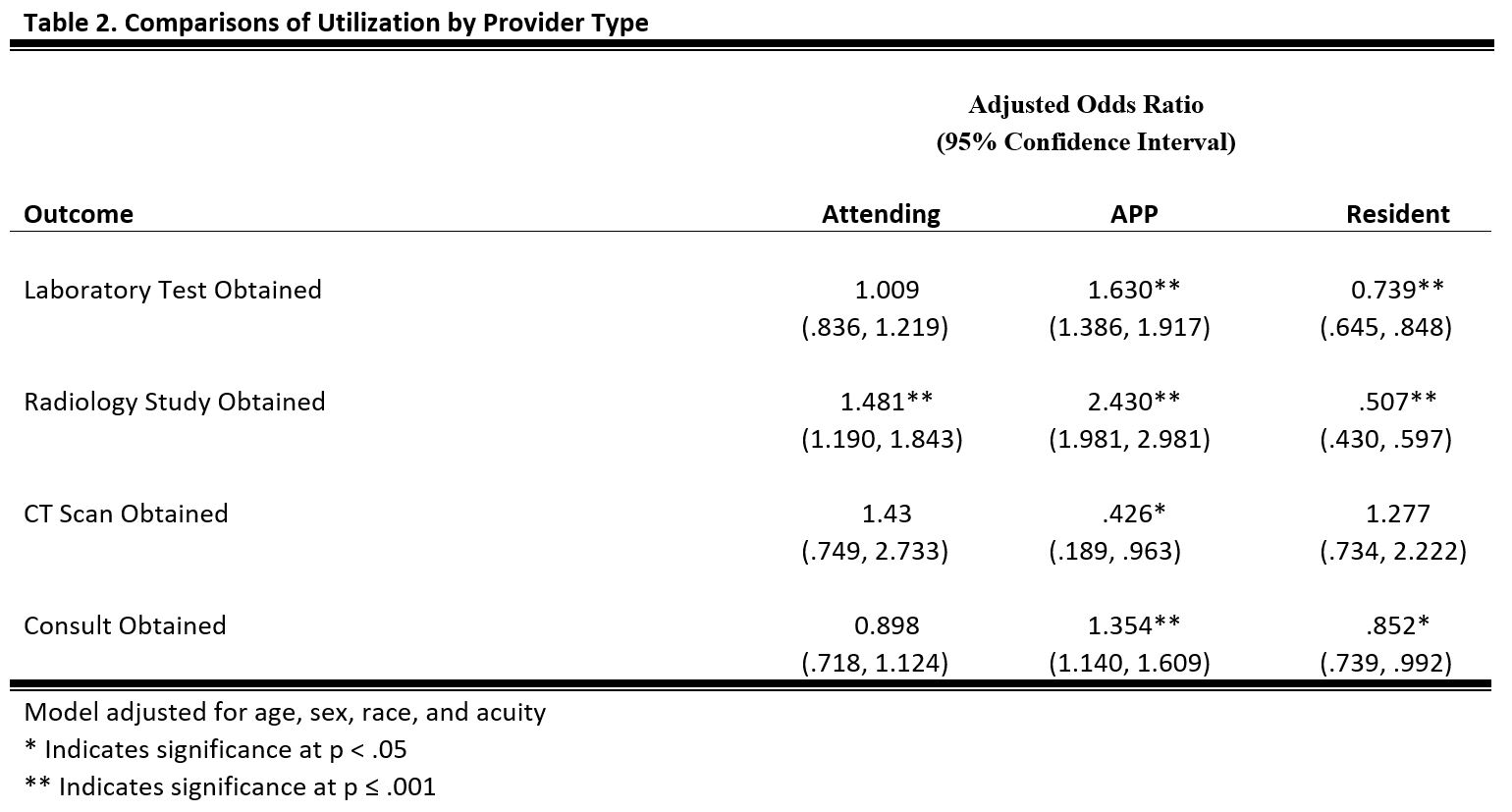Emergency Medicine
Session: Emergency Medicine 2: Operations
375 - Provider Type Influences Resource Utilization in Pediatric Emergency Department Patients with Abdominal Pain
Friday, May 3, 2024
5:15 PM - 7:15 PM ET
Poster Number: 375
Publication Number: 375.227
Publication Number: 375.227

AG Nuwan Perera, MD (he/him/his)
Pediatric Emergency Medicine Fellow
UPMC Childrens Hospital of Pittsburgh
PITTSBURGH, Pennsylvania, United States
Presenting Author(s)
Background: Evaluating pediatric abdominal pain in the emergency department (ED) can result in variable resource utilization due to its broad differential diagnosis and numerous management options. ED provider type (attending physician only, advanced practice providers (APP), and supervised resident physician) may contribute to this variation, but the adult literature is conflicting, and no evidence exists regarding pediatric patients.
Objective: To assess the impact of ED provider type on length of stay (LOS) and resource utilization in children presenting with abdominal pain.
Design/Methods: We conducted a retrospective chart review of all subjects aged 4-18 years at a quaternary care pediatric ED between May 2021 and April 2022 presenting with a chief complaint of abdominal pain. Collected data included demographics, LOS, disposition, 72-hour return visits, lab tests and radiology studies, consults, and ED provider type. Medically complex and high acuity cases were excluded. Statistical comparisons with ANOVA, chi-squared, and Kruskall-Wallis tests were performed. Multivariable linear and binomial logistic regression addressed the effects of the covariates age, gender, race, and acuity level.
Results: 3874 subjects were included (Figure 1). Patients were mostly school-aged (Median =7 years, IQR 7 to 15), 61% female, and ESI level 3 (86%). There was a significant difference in ED LOS by provider group (P < 0.001) but not admission (P=0.633) or 72-hour return rate (P= 0.606). Rates of obtaining lab tests (P < 0.001), any radiology study (P < 0.001), specifically CT scans (P=0.042), and consults (P < 0.001) varied significantly between groups (Table 1). Controlling for covariates, patients seen by an APP were more likely to have lab tests [OR 1.63, (95% CI 1.39-1.92)], radiology studies [2.43, (1.98-2.98)] and a consult [1.35, (1.14-1.61)] obtained, but less likely to specifically undergo CT [0.43, (0.19-0.96)] when compared to patients seen by attendings only and supervised residents. Patients seen by only an attending were more likely to undergo a radiology study [1.48, (1.19-1.84)] than those seen by APP’s and supervised residents. Patients seen by a supervised resident were less likely to get lab tests [0.74, (0.65-0.85)], radiology studies [0.51, (0.43-0.60)], and a consult [0.85, (0.74-0.99)] than those seen by only attendings and APP’s. (Table 2)
Conclusion(s): In moderate-acuity pediatric patients with abdominal pain, ED provider type may add variability in ED resource utilization. Further research is needed to optimize healthcare utilization.
Resource Utilization Patient Flow Chart .jpeg


